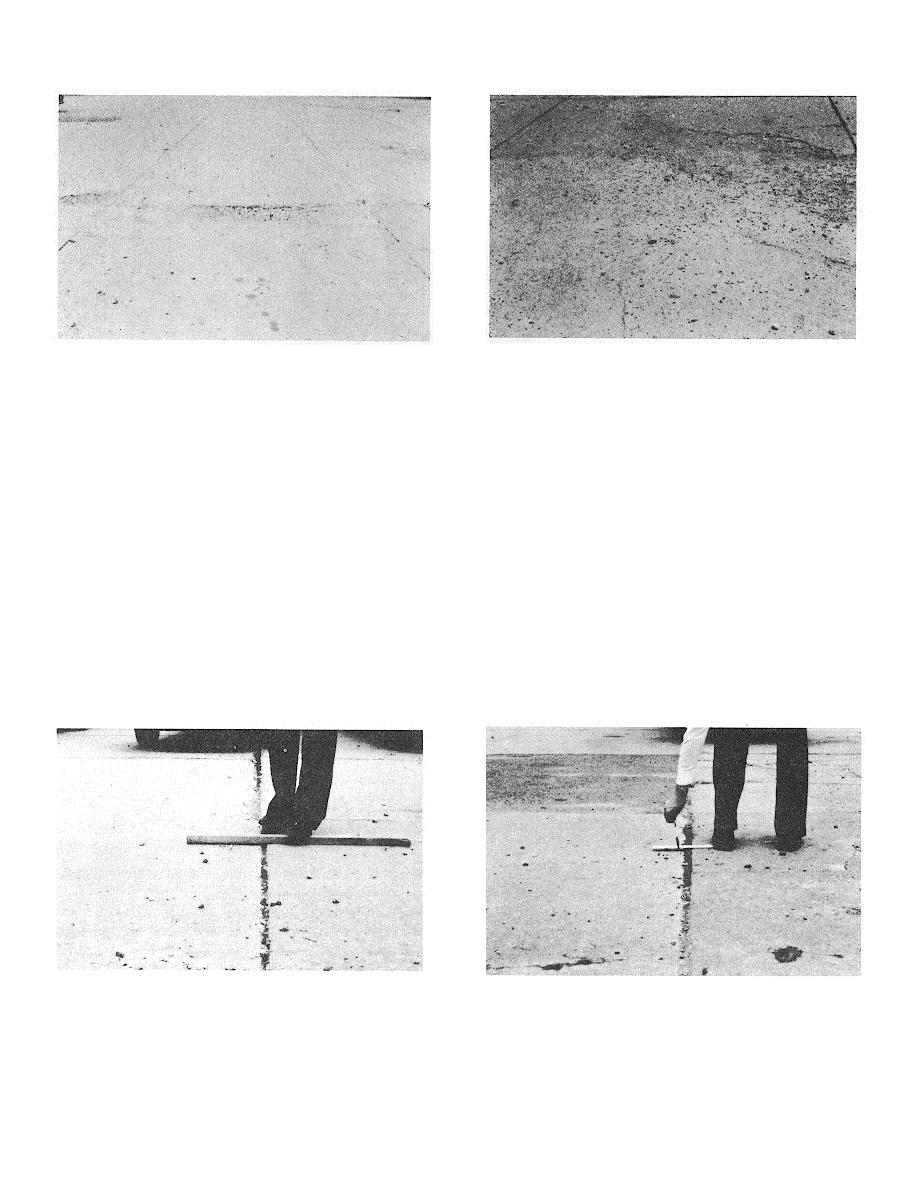
TM 5-623
Figure B-89. High-severity durability cracking.
Figure B-88. High-severity durability cracking.
How to Count:
When the distress is located and rated at one severity, it is counted as one slab.
If more than one severity level exists, the slab is counted as having the higher
severity distress. For example, if low and medium "D" cracking are on the
same slab, the slab is counted as having medium-severity cracking only.
Name of Distress:
Faulting.
Description:
Faulting is the difference in elevation across a joint. Some of the common
causes of faulting are:
1. Settlement because of soft foundation.
2. Pumping or eroding of materiel from under the slab.
3. Curling of the slab edges due to temperature and moisture changes.
Severity Levels:
Severity levels are defined by the difference in elevation across the crack or joint.
Severity level
Difference in elevation
L
1/8 to 3/8 inch
M
3/8 to 3/4 inch
H
> 3/4 inch
See figures B-90 through B-93.
Figure B-90. Low-severity faulting.
Figure B-91. Medium-severity faulting.
B-30



 Previous Page
Previous Page
